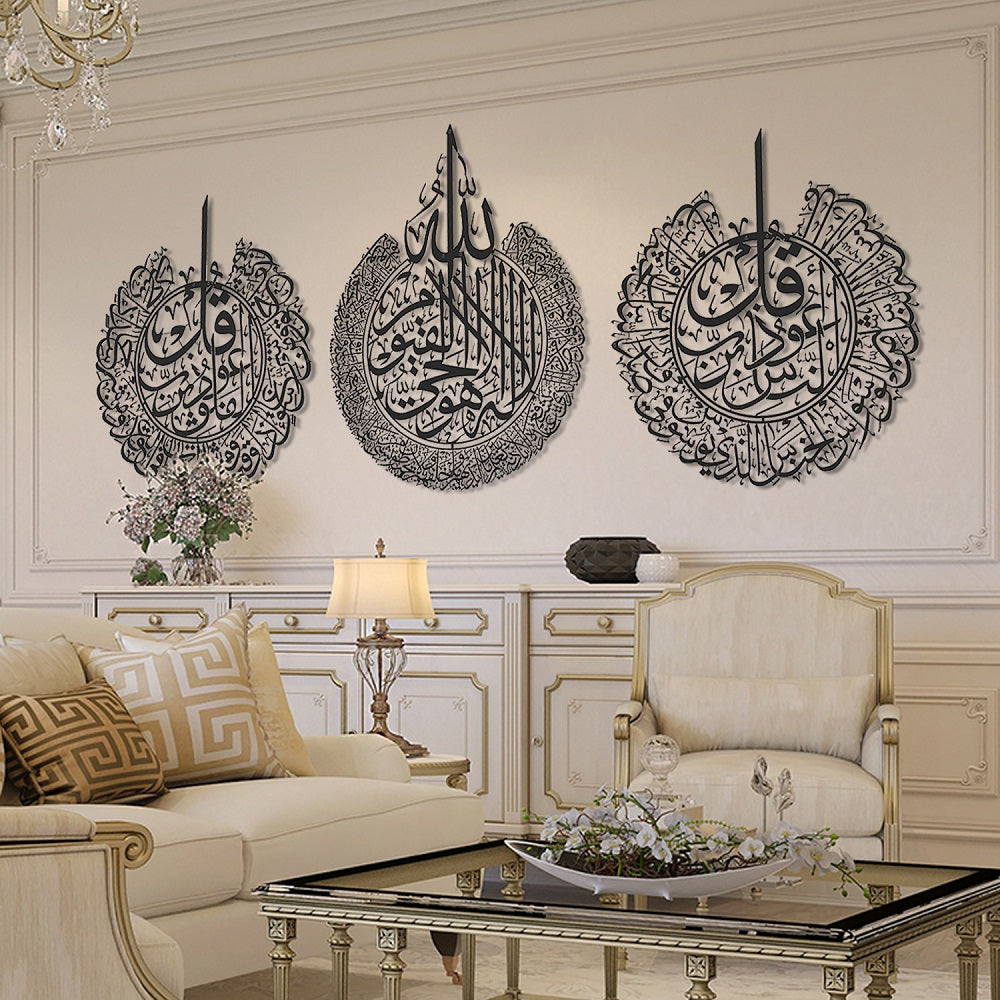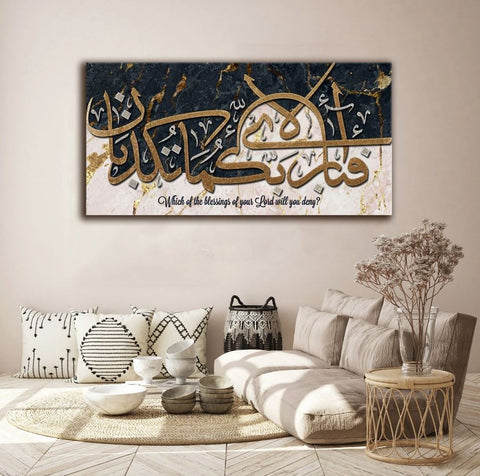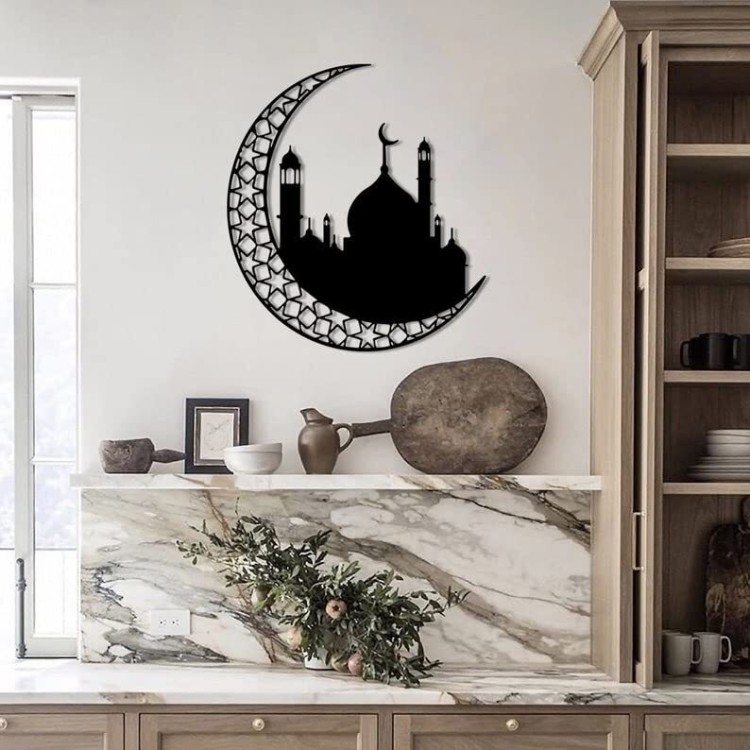Islamic wall decoration is more than just an aesthetic choice; it is a reflection of culture, history, and spirituality. As someone who has dabbled in various forms of home decor, I can confidently say that incorporating Islamic elements into your space adds a unique charm and elegance. In this comprehensive guide, we will explore various styles, materials, and practical tips for achieving the perfect Islamic wall decoration in your home.
Understanding Islamic Wall Decoration
Islamic wall decoration encompasses a range of artistic expressions, from intricate patterns and geometric designs to calligraphy and nature-inspired motifs. It serves to beautify our spaces and convey deeper meanings connected to faith and heritage.
Historical Context of Islamic Art
The roots of Islamic art trace back to the 7th century, evolving through centuries across various cultures and regions. From the magnificent palaces of Spain to the intricate mosques in Turkey, Islamic art reflects the values and beliefs of the Muslim community, primarily through the use of non-figurative designs.
Types of Islamic Wall Decor
To embrace Islamic decor, it’s crucial to understand the different types of wall decorations available. Here are some popular options:
1. Calligraphy Art
Islamic calligraphy is one of the most revered art forms in Islamic culture. It often features verses from the Quran or famous phrases conveying spiritual concepts.
Pros and Cons of Calligraphy Art
| Pros | Cons |
|---|---|
| Deep spiritual significance | Can be costly, especially for original pieces |
| Unique and personal touch | May not appeal to those who prefer abstract designs |

2. Geometric Patterns
Geometric designs are prevalent in Islamic art, symbolizing the unending nature of creation. These patterns can be found in tiles, textiles, and wall art.
Pros and Cons of Geometric Patterns
| Pros | Cons |
|---|---|
| Timeless appeal and versatility | Can sometimes feel too rigid or structured |
| Easy to match with modern decor | Complex patterns may overwhelm small spaces |

3. Nature-Inspired Motifs
Nature holds a significant place in Islamic art. Flowers, leaves, and other natural elements often appear in wall decorations, symbolizing growth and beauty.
Pros and Cons of Nature-Inspired Motifs
| Pros | Cons |
|---|---|
| Softens the atmosphere of a room | May clash with minimalistic designs |
| Offers vibrant colors and textures | Less symbolic than other forms |

4. Tapestries and Textiles
Tapestries can serve as stunning wall hangings, adding both warmth and texture to a room. These pieces are often rich in color and detail.
Pros and Cons of Tapestries
| Pros | Cons |
|---|---|
| Adds warmth and coziness | Can collect dust and require maintenance |
| Versatile for different styles | Potentially heavy and difficult to hang |

Choosing the Right Islamic Wall Decoration for Your Space
When selecting Islamic wall decoration, consider factors such as your home’s existing decor, your personal style, and the mood you wish to create.
Considerations for Selection
- Space: Assess the size of your wall and the overall layout of the room.
- Color Scheme: Choose a piece that complements your room’s color palette.
- Personal Connection: Select an item that resonates with you personally—be it through design, message, or nostalgia.

Placement Tips
The placement of your Islamic wall decoration can significantly impact the ambiance of your room. Here are some tips:
- Hang larger pieces at eye level for visual impact.
- Create a gallery wall with smaller items for a dynamic look.
- Consider lighting; spotlights can enhance the details of your decor.
Incorporating Islamic Wall Decoration into Modern Interiors
Many people shy away from combining traditional Islamic art with modern decor. However, the juxtaposition can create stunning results. Here’s how to do it effectively:

Mixing Styles
Don’t be afraid to mix traditional Islamic decorations with contemporary elements. For instance, pairing a geometric pattern with sleek furniture can create an eclectic and harmonious space.
Using Color Wisely
Islamic art often features rich colors. Combine these pieces with a muted or neutral palette to ensure that they stand out without overwhelming the space.
Accessorizing
Combine your wall decor with soft furnishings, such as cushions and curtains, featuring complementary Islamic patterns or colors.
DIY Islamic Wall Decoration Ideas
If you enjoy crafting, why not create your own Islamic wall decoration? Here are some ideas:
1. Stenciling
Create geometric patterns or Arabic calligraphy using stencils. This is an excellent way to add a personal touch to your walls.
2. Framed Art
Print high-quality images of Islamic art or calligraphy and frame them in a cohesive style for a gallery effect.
3. Wall Murals
If you’re feeling adventurous, consider painting a mural inspired by classic Islamic designs or motifs.
Maintaining Your Islamic Wall Decor
To ensure your Islamic wall decorations continue to look stunning, consider the following maintenance tips:
Regular Cleaning
Dust your decorations regularly with a soft cloth. For more intricate pieces, a gentle vacuuming might help remove dust from hard-to-reach places.
Avoid Direct Sunlight
To prevent fading, try not to place decorative pieces in direct sunlight for prolonged periods.
Check for Damage
Inspect your decor periodically for any signs of wear and tear so you can address issues before they worsen.
Conclusion: The Impact of Islamic Wall Decoration
Incorporating Islamic wall decoration into your home not only enhances its aesthetic appeal but also invites a sense of cultural richness and spiritual depth. Whether through intricate calligraphy, mesmerizing geometric patterns, or nature-inspired art, every piece tells a story. As you embark on this journey of beautifying your space, let your personal experiences and preferences guide you.
FAQs About Islamic Wall Decoration
What materials are commonly used in Islamic wall decorations?
Islamic wall decorations are often made from materials like wood, metal, fabric, and ceramics, each adding different textures and qualities to the decor.
Is Islamic wall decoration suitable for all home styles?
Yes! Islamic wall decorations can complement various home styles, from traditional to contemporary, with the right placement and color coordination.
How can I create a balanced look with Islamic wall decor?
To create balance, mix different styles and sizes of decorations while adhering to a cohesive color palette for a harmonious overall effect.
Can I use Islamic wall decoration outdoors?
While many Islamic decorations are suitable for indoor use, some weather-resistant pieces can enhance outdoor spaces if properly maintained.
How do I choose the right size of wall decoration?
The size of your wall decoration should correspond with the wall space available; larger pieces are ideal for bigger walls, while smaller items work well in groupings.